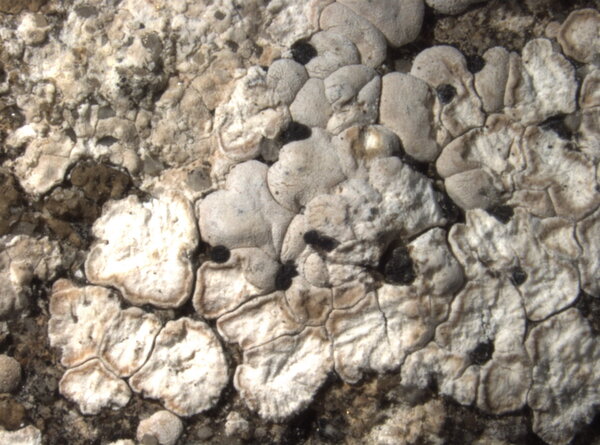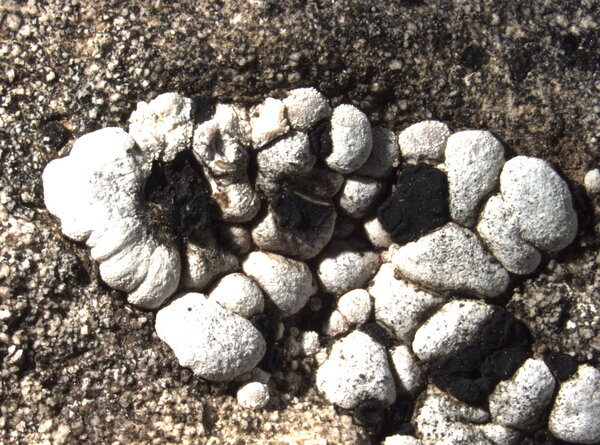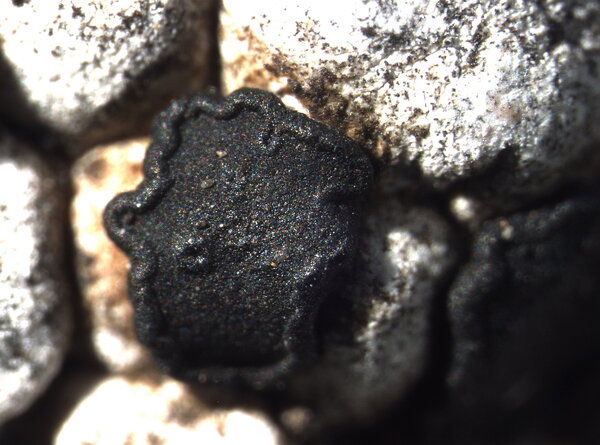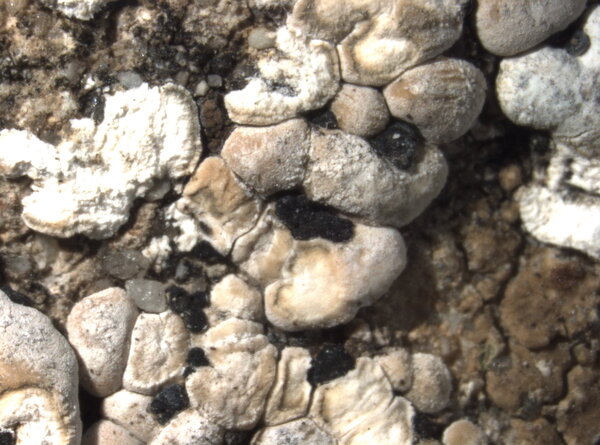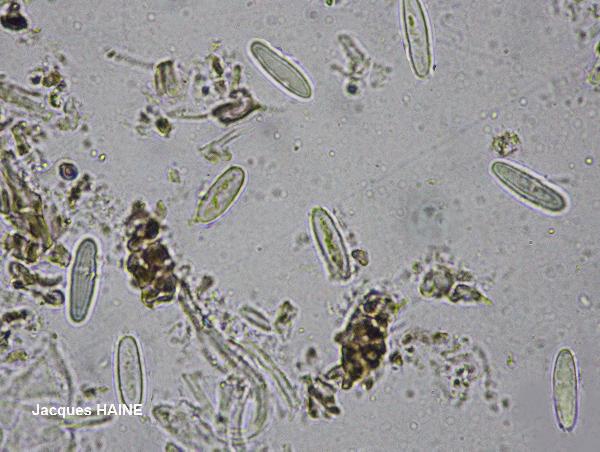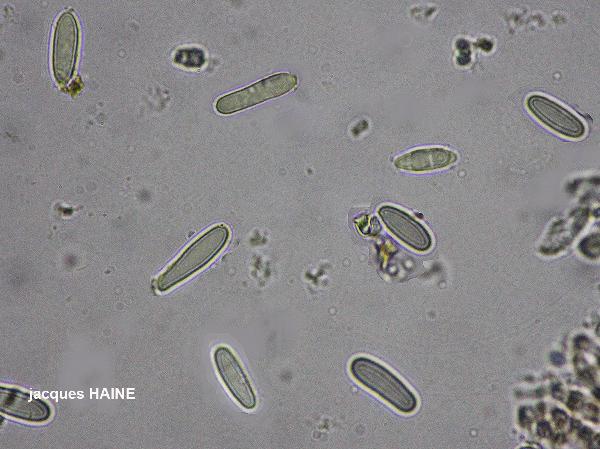Porpidinia tumidula (Sm.) Timdal
Bibl. Lichenol, 104: 334, 2010. Basionym: Lichen tumidulus Sm. - Trans. Linn. Soc. London, 1: 82, tab. 4, fig. 3, 1791.
Synonyms: Biatorina mammillaris (Gouan) Jatta; Biatorina tumidula (Sm.) A.L. Sm.; Lecidea mammillaris (Gouan) Fr.; Lichen mammillaris Gouan; Thalloidima mammillare (Gouan) A. Massal.; Thalloidima mesenteriforme Arnold; Thalloidima tumidulum (Sm.) Szatala; Toninia hercegovinica Zahlbr.; Toninia mammillaris (Gouan) Th. Fr.; Toninia mesenteriformis (Arnold) Schuler; Toninia tumidula (Sm.) Zahlbr.
Distribution: N - VG, Frl, Ven (Nascimbene & Caniglia 1997, Caniglia & al. 1999, Nascimbene & Marini 2007), TAA (Nascimbene & al. 2006, Nascimbene 2008b), Piem, Lig (Giordani & al. 2016). C - Tosc, Mol (TSB 27023), Sar. S - Pugl, Bas (Potenza & al. 2014), Cal (Puntillo 1996), Si (Nimis & al. 1994).
Description: Thallus subcrustose-squamulose, closely adpressed, the squamules up to 6(-8) mm wide, scattered to usually contiguous, flat to weakly convex, pale greenish grey to brown, but usually densely white-pruinose (but most often epruinose at margins), turning dark when wet; lower surface white to brownish. Upper cortex 50-80(-100) µm thick, with anticlinally oriented hyphae, sometimes with a thin epinecral layer, filled with crystals of calcium oxalates; medulla white, with crystals; lower cortex poorly developed to absent. Apothecia frequent, lecideine, to 1.5 mm across, mostly developing at the margins of squamules, at first flat, then convex, black and epruinose. Proper exciple thin, becoming excluded, dark brown throughout, K-, N-, with crystals of calcium oxalates; epithecium olive-brown, lacking crystals, K-, N-; hymenium colourless to pale brown in lower part, 65-80 µm high, I-; paraphyses coherent, 2.5(-3) µm thick at mid-level, the apical cell up to 6 µm wide, with a sharply delimited brown cap; hypothecium dark brown. Asci 8-spored, clavate, with a well-developed amyloid apical dome containing an indistinct, deeper amyloid apical cushion which is most pronounced in the upper part, approaching the Psora-type. Ascospores 0-1-septate, hyaline, ellipsoid to subfusiform, (10-)12-18(-20) x 3-5 µm. Pycnidia dark, submarginal. Conidia filiform, curved, 20-35 x c. 1 µm. Photobiont chlorococcoid. Spot tests: thallus K-, C-, KC-, P-, UV- or UV+ bluish. Chemistry: with an unknown UV+ substance.
Note: on weathered calciferous rocks, most often in fine crevices and on steeply inclined surfaces, with optimum in the submediterranean belt. The presence of atranorin, reported by Timdal 1991, was later refuted (Timdal 2010, Wirth & al. 2013).
Growth form: Squamulose
Substrata: rocks
Photobiont: green algae other than Trentepohlia
Reproductive strategy: mainly sexual
Commonnes-rarity: (info)
Alpine belt: absent
Subalpine belt: absent
Oromediterranean belt: absent
Montane belt: rare
Submediterranean belt: rather rare
Padanian area: absent
Humid submediterranean belt: rather rare
Humid mediterranean belt: very rare
Dry mediterranean belt: extremely rare
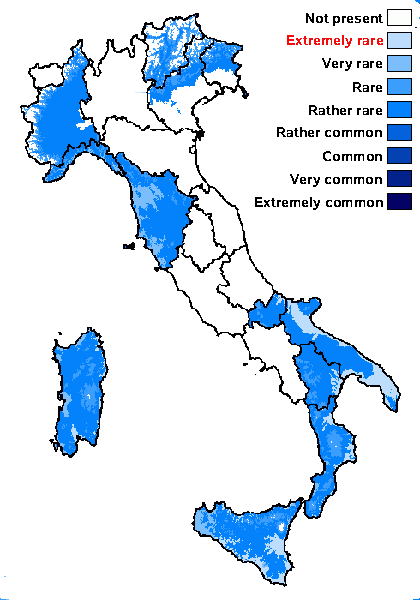
Predictive model
Herbarium samples
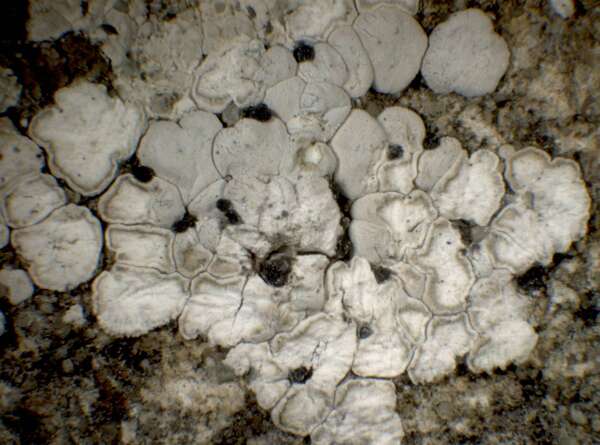

P.L. Nimis; Owner: Department of Life Sciences, University of Trieste
Herbarium: TSB (30061)
2001/12/11
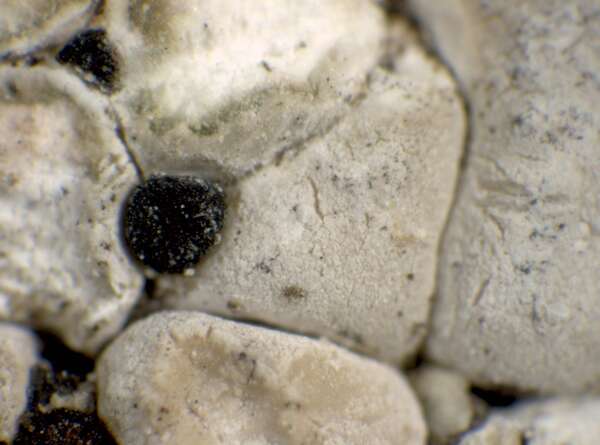

P.L. Nimis; Owner: Department of Life Sciences, University of Trieste
Herbarium: TSB (30061)
2001/12/11
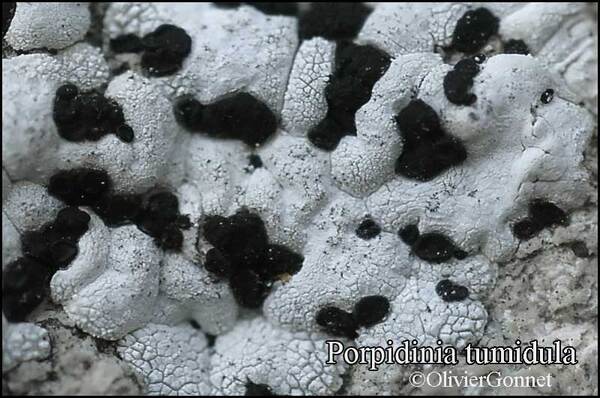
Courtesy Danièle et Olivier Gonnet - Source: https://www.afl-lichenologie.fr/Photos_AFL/Photos_AFL_P/Text_P_2/Porpidinia_tumidula.htm
France, 26/8/2017 - vers le crêt de la Neige, alt. 1710 m - Ain
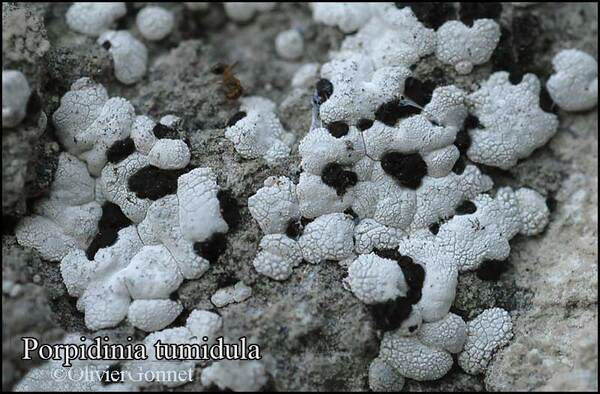
Courtesy Danièle et Olivier Gonnet - Source: https://www.afl-lichenologie.fr/Photos_AFL/Photos_AFL_P/Text_P_2/Porpidinia_tumidula.htm
France, 26/8/2017 - vers le crêt de la Neige, alt. 1710 m - Ain

Courtesy Danièle et Olivier Gonnet - Source: https://www.afl-lichenologie.fr/Photos_AFL/Photos_AFL_P/Text_P_2/Porpidinia_tumidula.htm
France, 26/8/2017 - vers le crêt de la Neige, alt. 1710 m - Ain

Courtesy Danièle et Olivier Gonnet - Source: https://www.afl-lichenologie.fr/Photos_AFL/Photos_AFL_P/Text_P_2/Porpidinia_tumidula.htm
France, 26/8/2017 - vers le crêt de la Neige, alt. 1710 m - Ain
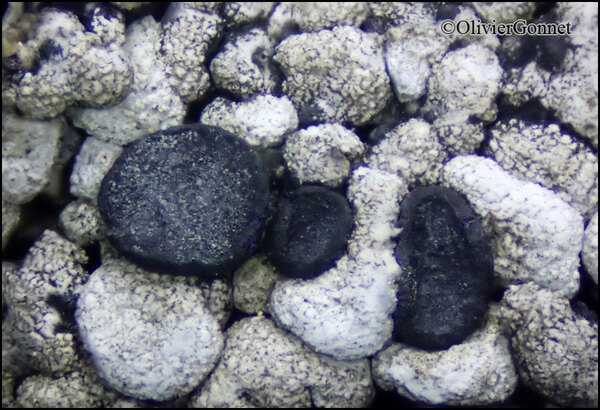
Courtesy Danièle et Olivier Gonnet - Source: https://www.afl-lichenologie.fr/Photos_AFL/Photos_AFL_P/Text_P_2/Porpidinia_tumidula.htm
France, 26/8/2017 - vers le crêt de la Neige, alt. 1710 m - Ain
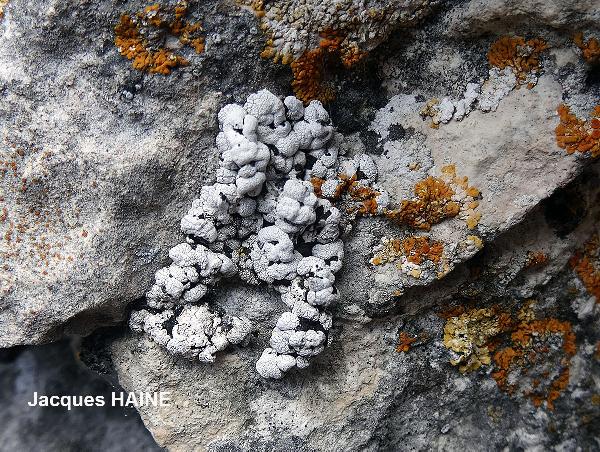
Jacques Haine - Source: http://www.lichensmaritimes.org/index.php?task=fiche&lichen=1333&lang=en
France, Dijon
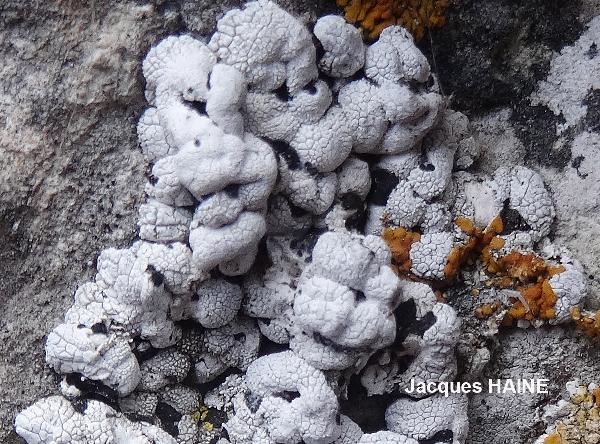
Jacques Haine - Source: http://www.lichensmaritimes.org/index.php?task=fiche&lichen=1333&lang=en
France, Dijon
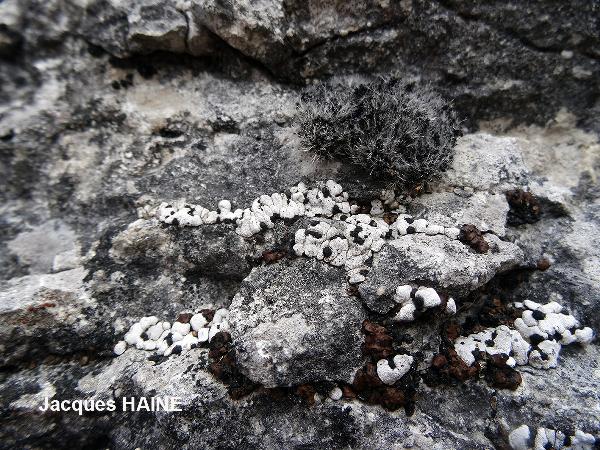
Jacques Haine - Source: http://www.lichensmaritimes.org/index.php?task=fiche&lichen=1333&lang=en
France, Remuzat

Jacques Haine - Source: http://www.lichensmaritimes.org/index.php?task=fiche&lichen=1333&lang=en
France, Remuzat
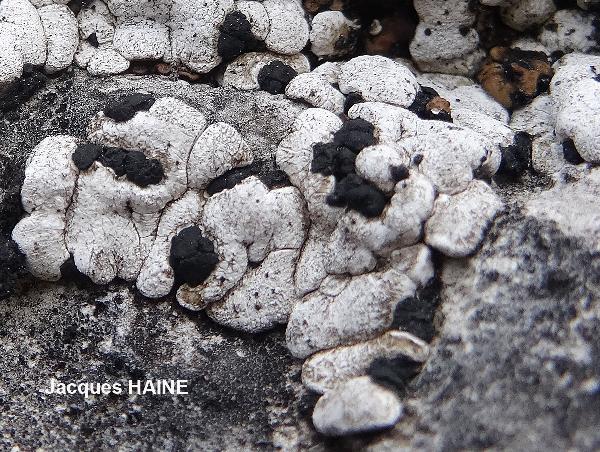
Jacques Haine - Source: http://www.lichensmaritimes.org/index.php?task=fiche&lichen=1333&lang=en
France, Remuzat
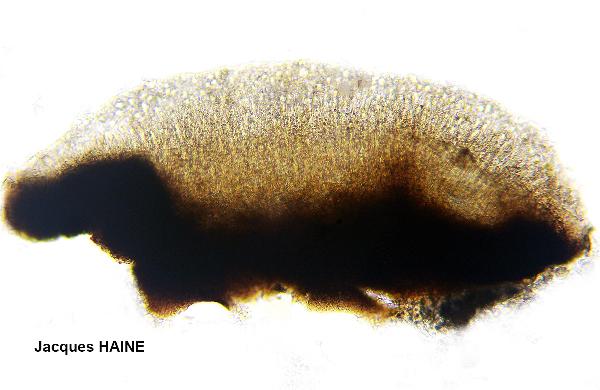
Jacques Haine - Source: http://www.lichensmaritimes.org/index.php?task=fiche&lichen=1333&lang=en
France, Remuzat
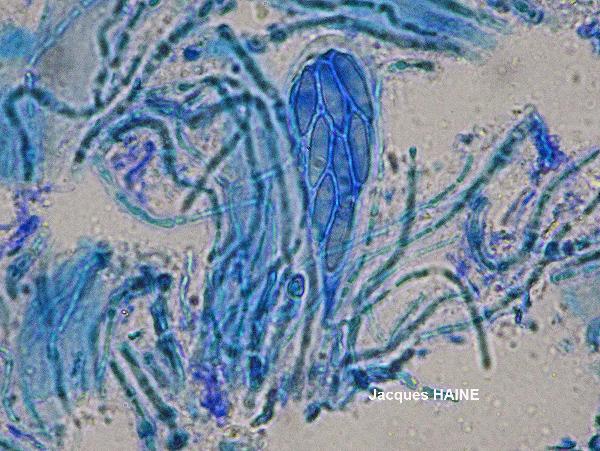
Jacques Haine - Source: http://www.lichensmaritimes.org/index.php?task=fiche&lichen=1333&lang=en
France, Remuzat
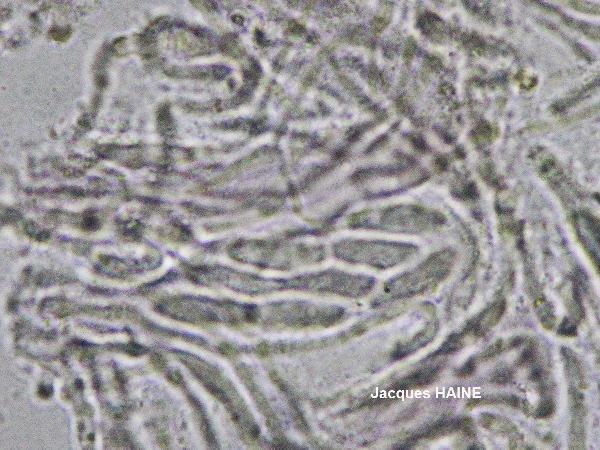
Jacques Haine - Source: http://www.lichensmaritimes.org/index.php?task=fiche&lichen=1333&lang=en
France, Remuzat

Jacques Haine - Source: http://www.lichensmaritimes.org/index.php?task=fiche&lichen=1333&lang=en
France, Remuzat
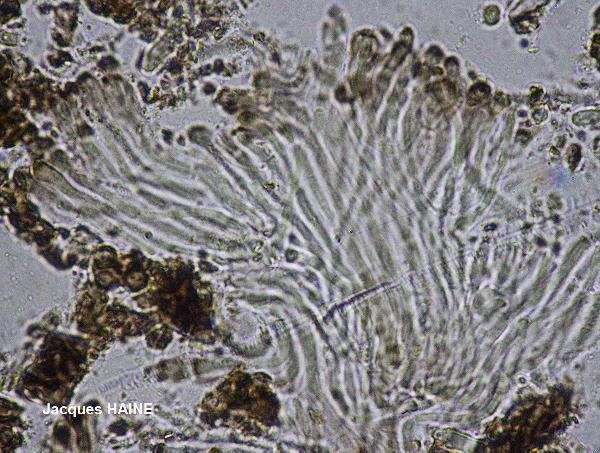
Jacques Haine - Source: http://www.lichensmaritimes.org/index.php?task=fiche&lichen=1333&lang=en
France, Remuzat
Growth form: Squamulose
Substrata: rocks
Photobiont: green algae other than Trentepohlia
Reproductive strategy: mainly sexual
Commonnes-rarity: (info)
Alpine belt: absent
Subalpine belt: absent
Oromediterranean belt: absent
Montane belt: rare
Submediterranean belt: rather rare
Padanian area: absent
Humid submediterranean belt: rather rare
Humid mediterranean belt: very rare
Dry mediterranean belt: extremely rare

Predictive model
| Herbarium samples |


P.L. Nimis; Owner: Department of Life Sciences, University of Trieste
Herbarium: TSB (30061)
2001/12/11


P.L. Nimis; Owner: Department of Life Sciences, University of Trieste
Herbarium: TSB (30061)
2001/12/11

Courtesy Danièle et Olivier Gonnet - Source: https://www.afl-lichenologie.fr/Photos_AFL/Photos_AFL_P/Text_P_2/Porpidinia_tumidula.htm
France, 26/8/2017 - vers le crêt de la Neige, alt. 1710 m - Ain

Courtesy Danièle et Olivier Gonnet - Source: https://www.afl-lichenologie.fr/Photos_AFL/Photos_AFL_P/Text_P_2/Porpidinia_tumidula.htm
France, 26/8/2017 - vers le crêt de la Neige, alt. 1710 m - Ain

Courtesy Danièle et Olivier Gonnet - Source: https://www.afl-lichenologie.fr/Photos_AFL/Photos_AFL_P/Text_P_2/Porpidinia_tumidula.htm
France, 26/8/2017 - vers le crêt de la Neige, alt. 1710 m - Ain

Courtesy Danièle et Olivier Gonnet - Source: https://www.afl-lichenologie.fr/Photos_AFL/Photos_AFL_P/Text_P_2/Porpidinia_tumidula.htm
France, 26/8/2017 - vers le crêt de la Neige, alt. 1710 m - Ain

Courtesy Danièle et Olivier Gonnet - Source: https://www.afl-lichenologie.fr/Photos_AFL/Photos_AFL_P/Text_P_2/Porpidinia_tumidula.htm
France, 26/8/2017 - vers le crêt de la Neige, alt. 1710 m - Ain

Jacques Haine - Source: http://www.lichensmaritimes.org/index.php?task=fiche&lichen=1333&lang=en
France, Dijon

Jacques Haine - Source: http://www.lichensmaritimes.org/index.php?task=fiche&lichen=1333&lang=en
France, Dijon

Jacques Haine - Source: http://www.lichensmaritimes.org/index.php?task=fiche&lichen=1333&lang=en
France, Remuzat

Jacques Haine - Source: http://www.lichensmaritimes.org/index.php?task=fiche&lichen=1333&lang=en
France, Remuzat

Jacques Haine - Source: http://www.lichensmaritimes.org/index.php?task=fiche&lichen=1333&lang=en
France, Remuzat

Jacques Haine - Source: http://www.lichensmaritimes.org/index.php?task=fiche&lichen=1333&lang=en
France, Remuzat

Jacques Haine - Source: http://www.lichensmaritimes.org/index.php?task=fiche&lichen=1333&lang=en
France, Remuzat

Jacques Haine - Source: http://www.lichensmaritimes.org/index.php?task=fiche&lichen=1333&lang=en
France, Remuzat

Jacques Haine - Source: http://www.lichensmaritimes.org/index.php?task=fiche&lichen=1333&lang=en
France, Remuzat

 INDEX FUNGORUM
INDEX FUNGORUM
 GBIF
GBIF
 DOLICHENS
DOLICHENS
